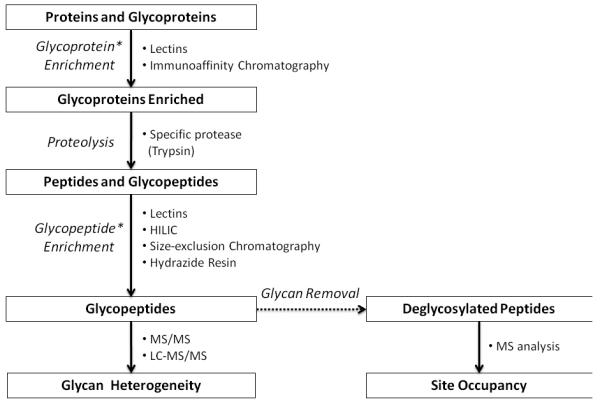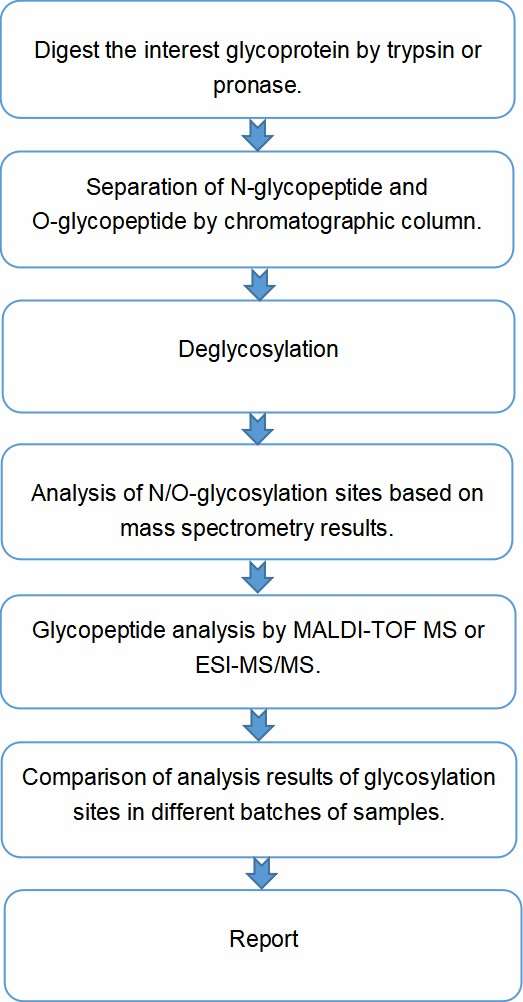Glycosylation Site Analysis Services
- Home
- Applications
- Proteomics Analysis Services
- Glycoproteomics Analysis Services
- Glycoprotein Analysis Services
- Glycosylation Site Analysis Services
Service Details
Glycosylation plays multiple important roles in many cellular events ranging from structure to signaling and recognition, involving protein localization, function and activity in tissues and cells. It is widely known that glycoprotein analysis requires the identification of glycosylation sites and the glycan structures associated with each site. In addition to the application of point mutations in traditional biochemistry, the study of glycosylation sites has also played an important role in the identification of N/O-terminal glycosylation sites. MALDI TOF MS and nano LC-ESI-MS/MS are commonly used to identify N/O-glycosylation sites in biological samples.
 Fig.
1. The standard approaches to determine site-specific glycosylation employing the specific enzymatic proteolysis.
(An H J, et al., 2009)
Fig.
1. The standard approaches to determine site-specific glycosylation employing the specific enzymatic proteolysis.
(An H J, et al., 2009)
As an advanced protein sequencing and mass spectrometry provider, Creative Proteomics provides you with a wide range of glycosylation site analysis services to obtain vital information that can be used at every stage of drug development.
At Creative Proteomics, we offer two glycosylation site analysis services to characterize glycoproteins.
Our scientists with extensive experience in glycosylation site analysis have developed a complete glycosylation site analysis workflow:
 Fig. 2. Workflow of our
glycation site analysis services.
Fig. 2. Workflow of our
glycation site analysis services.
Liquid chromatography-mass spectrometry (LC-MS) was used to determine glycosylation sites as part of peptide mapping studies. Glycosylation at each individual site was then characterized following release of glycans from each purified glycopeptide using a range of efficient techniques. Our technology platforms include, but are not limited to.
The ICH Q6B guideline requires comprehensive characterization of biopharmaceutical samples glycosylatio. Our glycosylation site analysis service can help you with the following, but not limited to.
Creative Proteomics is a trusted provider of glycoproteomics analysis services. We offer a wide range of glycosylation site analysis services to our clients worldwile. Our services guarantee accurate and reliable results, at quick turnaround time! If you would like more information about specific aspects of our services, feel free to contact us and we will be happy to answer any questions.
References
For research use only, not intended for any clinical use.